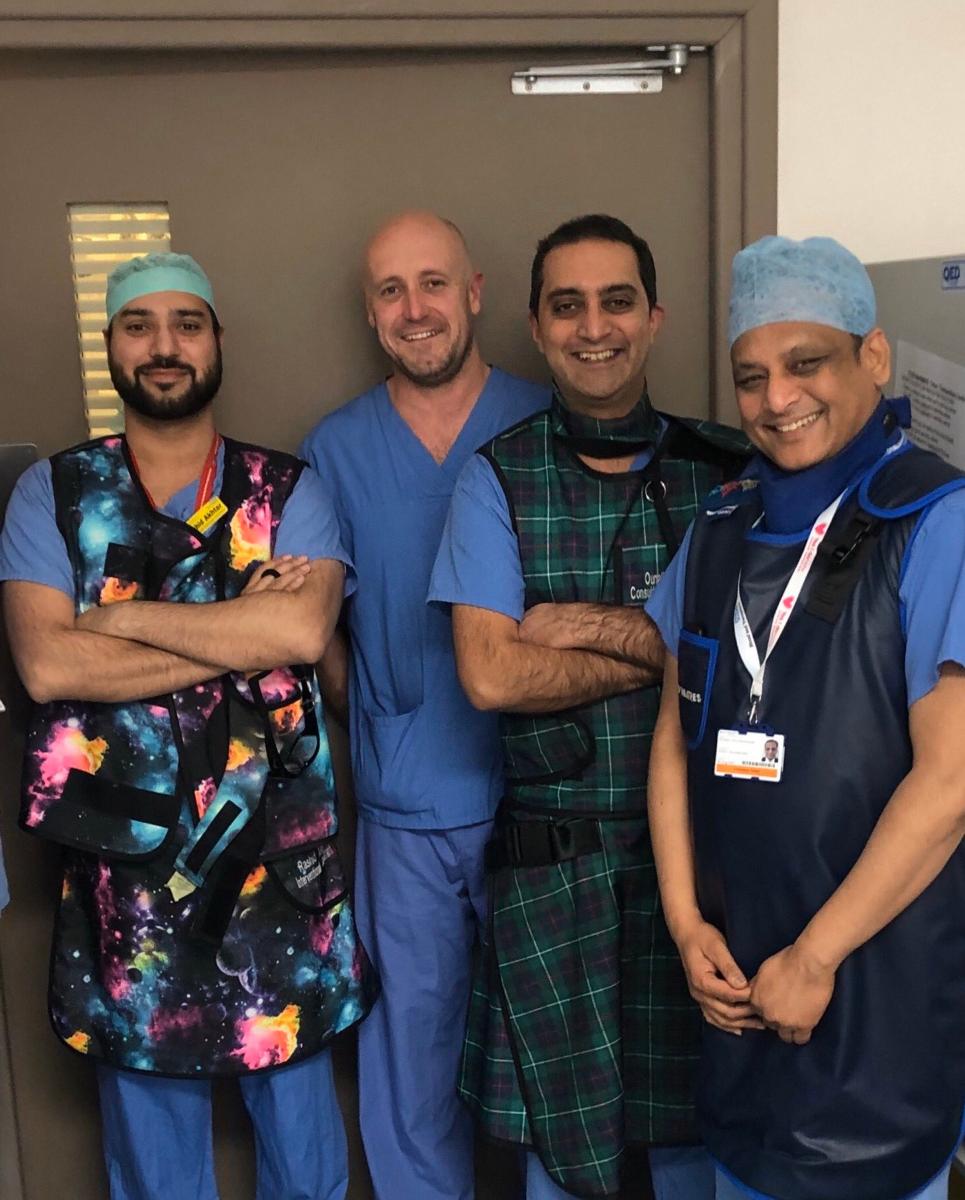UK-first innovation could save lives of dialysis patients

Barts Health has performed a UK-first operation outside of trial setting that could reduce mortality and risks of infection in patients with dialysis.
Dialysis is a vital procedure used by 30,000 renal patients across the UK that removes waste and excess fluid from the blood when the kidneys stop working properly, which often involves diverting blood to a machine to be cleaned.
Interventional radiologists at The Royal London Hospital have carried out a new minimally invasive arteriovenous fistula (AVF) procedure called a WavelinQ EndoAVF.
An endovascular AVF involves fusing a connection between the artery and adjacent vein within the forearm using direct heat which patients can use for dialysis. This procedure is an alternative to the more invasive traditional option of open surgery.
Dialysis can also be conducted through a central venous catheter (CVC), a small plastic tube inserted into one of the large veins but is associated with much greater risks than dialysis through an AVF, including infection, high levels of morbidity and causing veins to close and is therefore avoided if possible.
The novel EndoAVF procedure results in a closed circuit that provides adequate blood flow to the superficial veins for dialysis and blood can be withdrawn, cleaned through a dialysis machine, and returned to the body.
With the EndoAVF system – conducted by interventional radiologists Dr Ounali Jaffer, Dr Rashid Akhtar and Mr Rajesh Sivaprakasam at The Royal London Hospital – two thin catheters are inserted into the artery and the vein through small needle punctures.
Magnets help to align the devices and a connection is made between the vein and artery in the forearm without the need for open surgery, which allows clinicians to access the blood stream and gives patients a reliable long-term dialysis AV fistula.
The dual magnetic catheter system is removed from the body once the connection is created and the arm heals without stitches with little or no scarring.
Dr Ounali Jaffer, interventional radiologist at The Royal London Hospital, said:
“This new treatment really enhances our techniques in treating those patients with end stage kidney disease. Avoiding a CVC is imperative and now we have another procedure available to enable timely AVF creation.
“There are only a finite number of options available in creating an AVF, which is the lifeline for the patient. By extending these options, we can maximise the use of these vessels.
“The obvious added benefits are that the procedure is relatively quick and leaves no sign of a procedure, with no visible scar. These are early days, but the innovation is exciting and will hopefully benefit a number of our local population with end stage kidney disease.”
 The WavelinQ EndoAVF procedure was carried out on Ronald, 58, from Forest Gate, the first patient to benefit from this ground-breaking surgery.
The WavelinQ EndoAVF procedure was carried out on Ronald, 58, from Forest Gate, the first patient to benefit from this ground-breaking surgery.
He’s had end-stage kidney failure for two years and is waiting to have a transplant.
For 18 months, Ronald has been receiving peritoneal dialysis which involves inserting a catheter into the abdomen so that the peritoneal membrane can be used as a pre-dialysis filter for the waste chemicals in the blood.
“My kidneys were pretty bad, and they definitely needed replacing.
“I could hardly walk, I lost a lot of weight and was down to about 55 kg.
“I didn’t think I was going to make it,” Ronald said.
His peritoneal dialysis has kept him alive and healthy, but it is uncertain how much longer this form of dialysis is feasible as it has a limited lifespan.
The WavelinQ EndoAVF means that he will be able to switch seamlessly from peritoneal dialysis to haemodialysis – during which the blood will pass into the dialysis machine via a tube in the arm – continuing this lifesaving treatment.
As a minimally invasive surgery it left no scars, required only local anaesthetic and fewer procedures to keep it going rather than the open surgical equivalent.
Ronald was discharged on the same day as the procedure and his brother took him home later that day.
Of his surgery, Ronald said: “All I have left is two little marks near the wrist, but you hardly ever notice. It’s only when you put a finger to the pulse in your arm that you can feel a difference.
“It vibrates quite a lot - you can pump a lot of blood through. I think when they link to a dialysis machine the blood will flow out of it pretty well.
“It’s excellent surgery – they were really good.”
This story has been featured in the Daily Mail, Newham Recorder, East London Advertiser and Interventional News.
